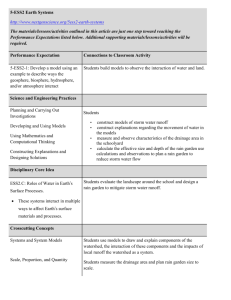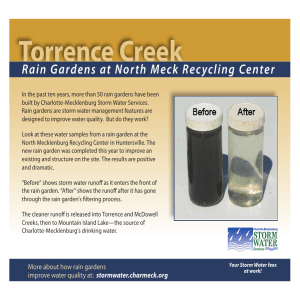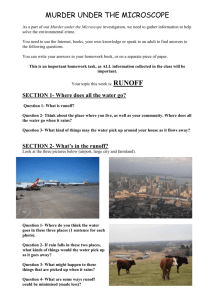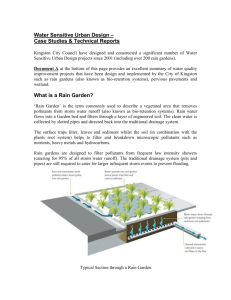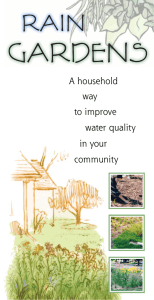“Rooftop Runoff – Harvesting Rainwater”
advertisement
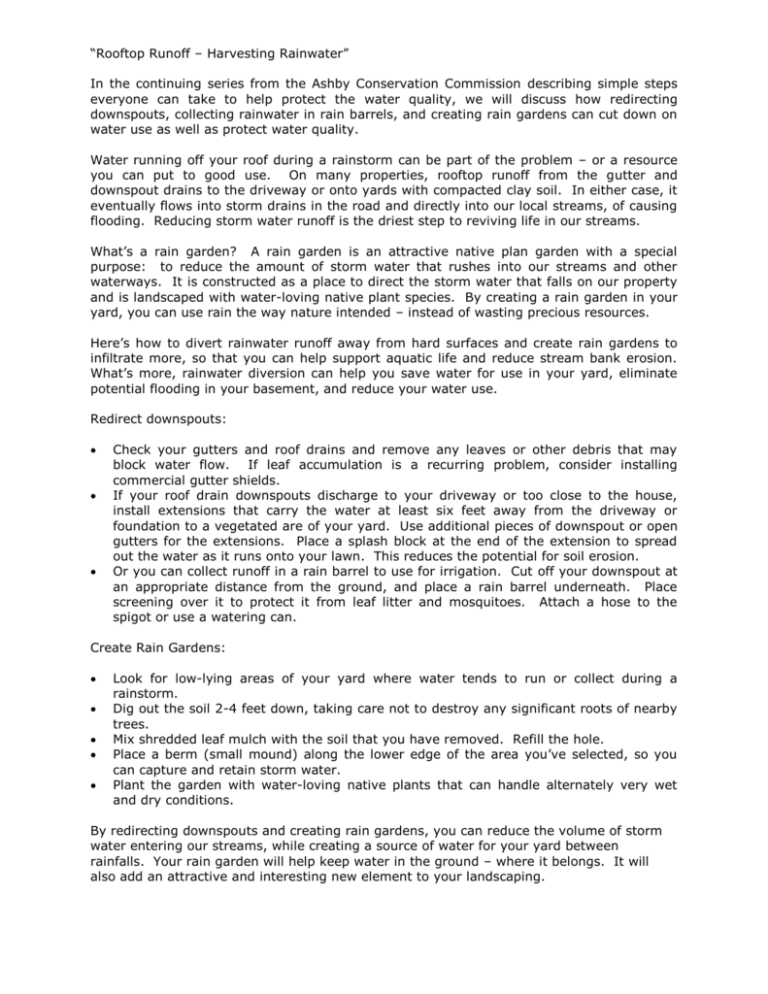
“Rooftop Runoff – Harvesting Rainwater” In the continuing series from the Ashby Conservation Commission describing simple steps everyone can take to help protect the water quality, we will discuss how redirecting downspouts, collecting rainwater in rain barrels, and creating rain gardens can cut down on water use as well as protect water quality. Water running off your roof during a rainstorm can be part of the problem – or a resource you can put to good use. On many properties, rooftop runoff from the gutter and downspout drains to the driveway or onto yards with compacted clay soil. In either case, it eventually flows into storm drains in the road and directly into our local streams, of causing flooding. Reducing storm water runoff is the driest step to reviving life in our streams. What’s a rain garden? A rain garden is an attractive native plan garden with a special purpose: to reduce the amount of storm water that rushes into our streams and other waterways. It is constructed as a place to direct the storm water that falls on our property and is landscaped with water-loving native plant species. By creating a rain garden in your yard, you can use rain the way nature intended – instead of wasting precious resources. Here’s how to divert rainwater runoff away from hard surfaces and create rain gardens to infiltrate more, so that you can help support aquatic life and reduce stream bank erosion. What’s more, rainwater diversion can help you save water for use in your yard, eliminate potential flooding in your basement, and reduce your water use. Redirect downspouts: Check your gutters and roof drains and remove any leaves or other debris that may block water flow. If leaf accumulation is a recurring problem, consider installing commercial gutter shields. If your roof drain downspouts discharge to your driveway or too close to the house, install extensions that carry the water at least six feet away from the driveway or foundation to a vegetated are of your yard. Use additional pieces of downspout or open gutters for the extensions. Place a splash block at the end of the extension to spread out the water as it runs onto your lawn. This reduces the potential for soil erosion. Or you can collect runoff in a rain barrel to use for irrigation. Cut off your downspout at an appropriate distance from the ground, and place a rain barrel underneath. Place screening over it to protect it from leaf litter and mosquitoes. Attach a hose to the spigot or use a watering can. Create Rain Gardens: Look for low-lying areas of your yard where water tends to run or collect during a rainstorm. Dig out the soil 2-4 feet down, taking care not to destroy any significant roots of nearby trees. Mix shredded leaf mulch with the soil that you have removed. Refill the hole. Place a berm (small mound) along the lower edge of the area you’ve selected, so you can capture and retain storm water. Plant the garden with water-loving native plants that can handle alternately very wet and dry conditions. By redirecting downspouts and creating rain gardens, you can reduce the volume of storm water entering our streams, while creating a source of water for your yard between rainfalls. Your rain garden will help keep water in the ground – where it belongs. It will also add an attractive and interesting new element to your landscaping.
